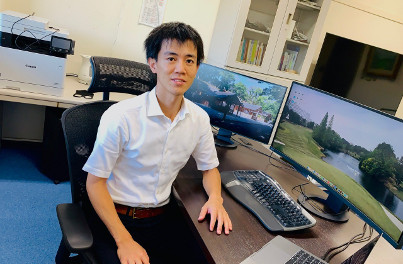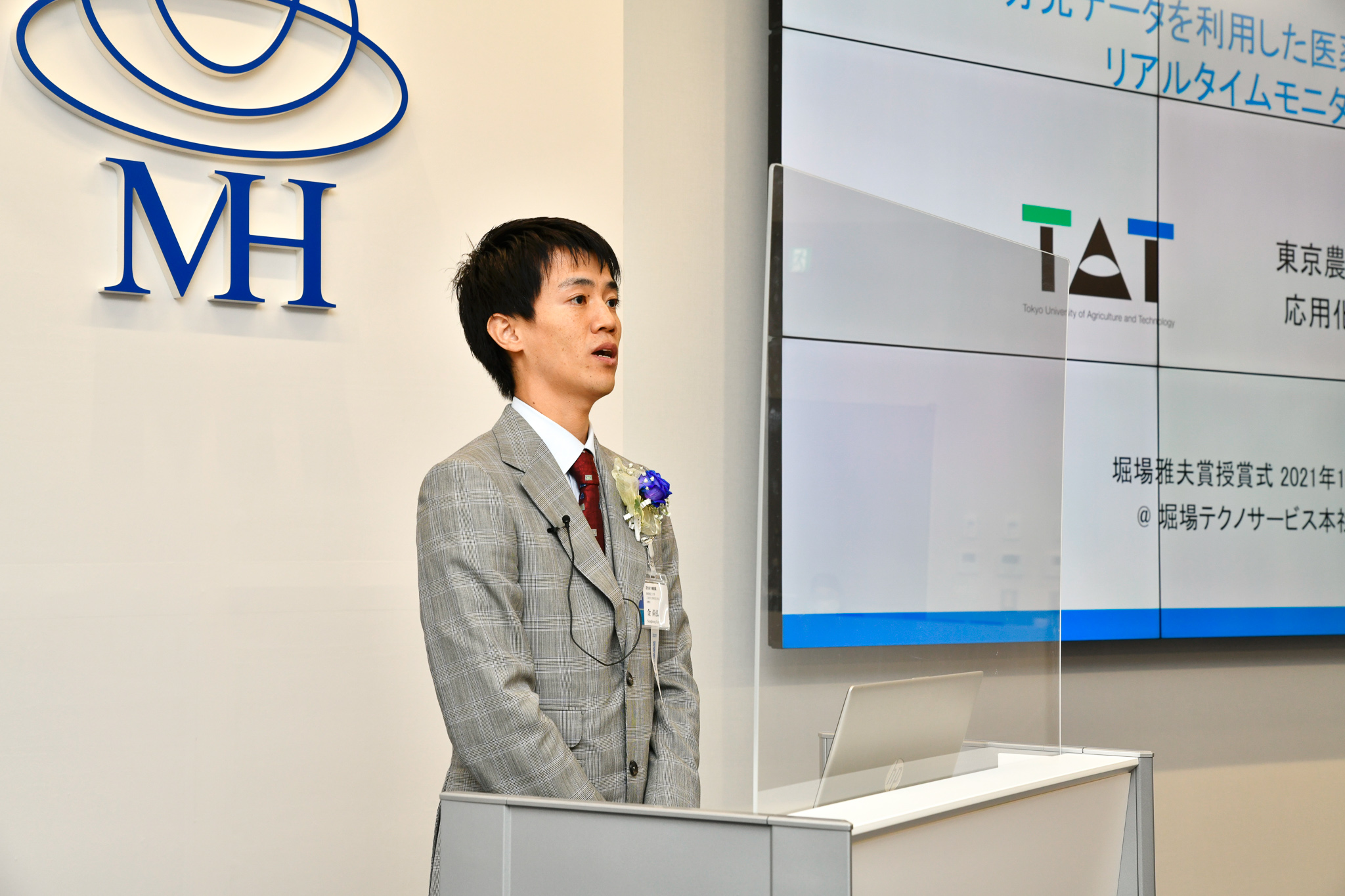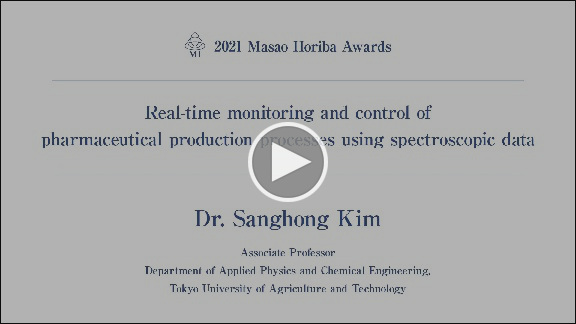Real-time monitoring and control of pharmaceutical
production processes using spectroscopic data

Dr. Sanghong Kim
Associate Professor
Department of Applied Physics and Chemical Engineering,
Tokyo University of Agriculture and Technology
*The organization and the title are those when awarded
Research summary
In recent years, there has been a growing demand for developing new technologies that achieve higher operational efficiency of pharmaceutical manufacturing. As part of this, technological developments to promote shift from the conventional batch manufacturing ※ to continuous manufacturing are under progress. In order to realize continuous manufacturing, real-time pharmaceutical quality monitoring within the continuous manufacturing processes are critical. However, acquiring information related to pharmaceutical quality in real-time manner is often an issue. In addition, the conventional analytical methods for predicting pharmaceuticals quality from the near-infrared spectra suffer from deterioration of prediction
accuracy over time, making it difficult for their installation in the process.
Dr. Kim developed novel data analytical methods for quality prediction from near-infrared spectra with improved accuracy and robustness compared to the conventional methods.
By performing real-time quality control with the developed methods, improved pharmaceutical production process, reduction of cost, environmental load as well as accidental risk can be achieved.
※ A manufacturing method in which each process is independent, and after the end of each process, sampling inspections are conducted to confirm quality of the products in prior to proceed to the next process.
accuracy over time, making it difficult for their installation in the process.
Dr. Kim developed novel data analytical methods for quality prediction from near-infrared spectra with improved accuracy and robustness compared to the conventional methods.
By performing real-time quality control with the developed methods, improved pharmaceutical production process, reduction of cost, environmental load as well as accidental risk can be achieved.
※ A manufacturing method in which each process is independent, and after the end of each process, sampling inspections are conducted to confirm quality of the products in prior to proceed to the next process.







